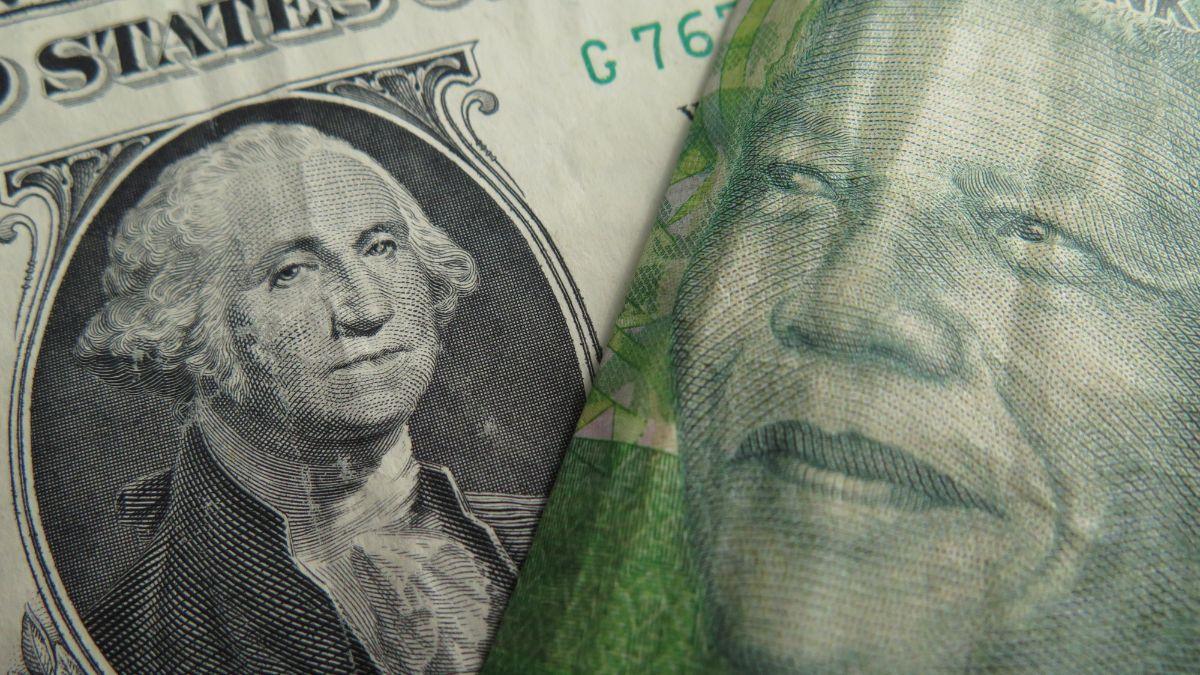Africa-Press – South-Africa. The South African rand is far weaker than it should be, with its fair value potentially as low as R11.30 to the US dollar.
That is the view of Frederick Mitchell, chief economist at Alume Capital, who argued that policy missteps, poor investor sentiment, and geopolitical tensions have created a large risk premium embedded in the currency.
“As of October 2025, the South African rand is trading at R17.15 against the US dollar, a significant figure in the context of an estimated average exchange rate of R18.20 from January to September 2025,” Mitchell explained.
He noted that when calculated using purchasing power parity (PPP), a measure that factors in inflation differences between South Africa and the US over the past five years, the rand should be much stronger.
“Market analyses leveraging the PPP exchange rate indicate that the rand remains undervalued. This disparity suggests an alignment closer to R14.30 in a conservative estimation and potentially as low as R11.30,” he said.
Mitchell attributed this undervaluation to a substantial risk premium, driven by both domestic and international factors.
“The undervaluation points to a substantial risk premium driven by domestic policies and geopolitical tensions,” he said.
He pointed to rising government debt, policy uncertainty, and investor-hostile regulations such as stricter empowerment requirements, the Employment Equity Amendment Act, and the threat of expropriation without compensation as major deterrents to foreign capital inflows.
“South Africa’s escalating government debt and economic strategies deemed hostile to foreign investment discourage capital inflow,” Mitchell said.
He added that these concerns are being compounded by South Africa’s international positioning.
“South Africa’s contentious international stance, notably regarding the Middle East conflict and its alignment with global outliers like Iran, Hamas, and Russia, further amplifies foreign investor concerns,” he explained.
This geopolitical posture has already had tangible consequences for trade. Consequently, South Africa faces punitive tariffs of up to 30% on exports to the US.
“This is particularly affecting manufactured goods such as vehicles and automotive parts and agricultural products, eroding competitiveness in a major market for South African exports,” said Mitchell.
South Africa needs to tap its true economic potential
Aluma Capital Chief Economist, Frederick Mitchell
The African Growth and Opportunity Act (AGOA), which previously provided duty-free access to the US, has also expired.
While a temporary extension could provide some relief, Mitchell warned that it would do little to offset the damage already done.
“With the trade program’s expiry and no bilateral deal to cushion the blow, South Africa’s export landscape appears precarious, particularly for sectors like automotive and agriculture, which already bear elevated costs due to new tariffs,” he said.
The effects are already visible in the economy. Foreign direct investment has slumped, with a sharp R73.5 billion outflow linked to Anglo American’s strategic divestments.
The job market is also under strain, with formal employment shrinking by 229,000 jobs between June 2024 and June 2025.
The automotive sector, a cornerstone of South Africa’s manufacturing industry, has been particularly badly hit.
“Vehicle exports to the US have diminished dramatically, costing the nation R16.7 billion over seven months,” Mitchell said.
Losses in the automotive sector have spilt into other industries, with community services and trade also experiencing significant job losses.
Mitchell warned that a persistently weak rand has wider consequences for the domestic economy.
“With global economic conditions and internal missteps continuing to strain the rand’s value, inflation risks loom large,” he said.
A weaker currency drives up the cost of imports, pushing consumer prices higher and complicating the South African Reserve Bank’s inflation-targeting efforts.
Higher interest rates may then be required to contain inflation, which would further suppress economic activity and employment.
“This potential cycle of lowered economic output, rising unemployment, and reduced growth forecasts could further depreciate the value of the rand against the US dollar and other major currencies,” Mitchell cautioned.
He stressed that the gap between the rand’s fair value and its actual exchange rate underscored the urgent need for South Africa to recalibrate its economic and foreign policies.
“Addressing these factors may reverse some of the rand’s undervaluation and risk premium embedded in the exchange rate and harness its true economic potential.”
He added that constructive international engagement and a more investor-friendly policy stance could put South Africa on a stronger footing.
“For South Africa, engaging more constructively on the international stage and revisiting economic strategies could unlock stability and growth, fostering a competitive edge in the global market during uncertain times,” said Mitchell.
For More News And Analysis About South-Africa Follow Africa-Press






